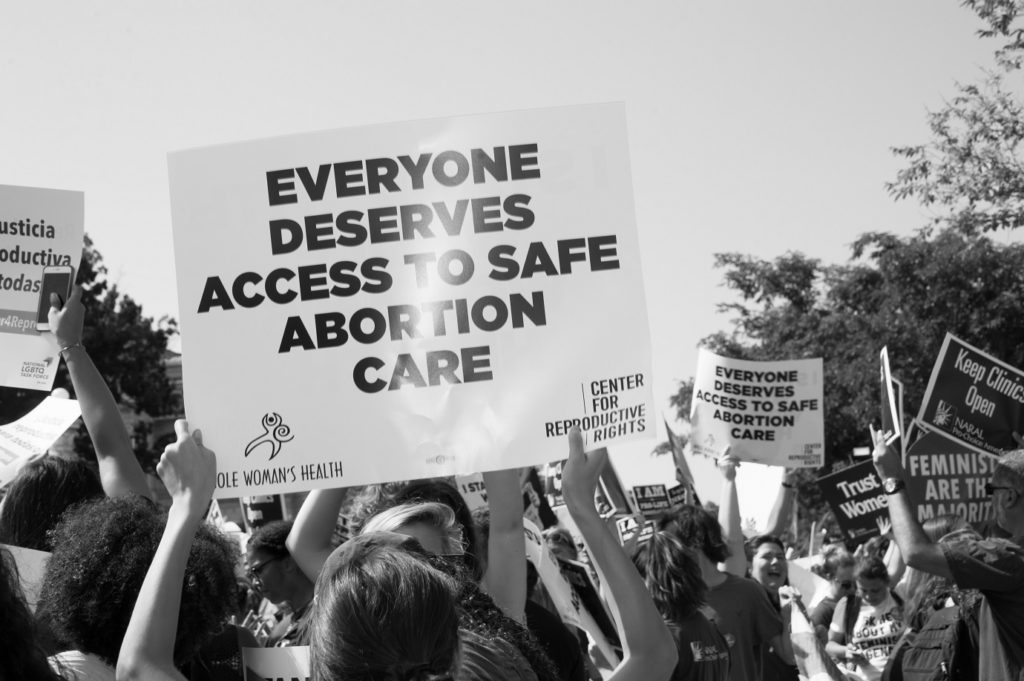In Australia, we must consider our own complex and inconsistent abortion regulations, writes Bonney Corbin, from the country’s only national abortion provider, MSI Australia.
Bonney is MSI’s Head of Policy, and shares this piece in line with the release of the Australian Abortion Access Scorecard.
As this Roe Vs Wade doomsday passes by, Australia needs to step back and take stock.
Australia fortified abortion rights just five years ago.
At a bi-partisan Women’s Health Summit in Sydney in 2018, politicians met with community and sector leaders to co-design a long term vision.
Until that moment, it had been a tumultuous road for national women’s health. The National Women’s Health Strategy (2010-2020) had been scrapped following a change in Government in 2013.
That day, we sat in the dimly lit function room, mini escargots in hand, watching the women’s health landscape change before our eyes.
The then Health Minister, Greg Hunt, addressed the elephant in the room. He acknowledged that the previous women’s health strategy had been abandoned, and announced a new one.
The Summit marked the initial stages of a liberal framework to progress the health rights of all women, the National Women’s Health Strategy (2020-2030).
From 2018 until today, abortion law reforms have taken place in Queensland, the ACT, New South Wales, the Northern Territory, Western Australia and now South Australia.
Like dominoes, each State and Territory had removed parts of the criminal code which could jail a patient for accessing an abortion.
We celebrated the ‘decriminalisation of abortion’ across Australia. A misleading phrase.
When abortion moved into health law, layers of regulation ensued. While patients were given the green light, caregivers, nurses and doctors hovered in the amber.
We were only removing parts of the code that referred to patients being criminalised. Why?
Politicians are not doctors.
Ideally, medical colleges would regulate abortion so that they can continually update clinical guidelines based on current medical evidence. Instead, State and Territory Governments over regulate abortion.
Abortion stigma is political.
During parliamentary debates on abortion law, against expert advice, politicians table obscure abortion law amendments. These last minute changes restrict, who, where and why an abortion can be provided.
Long after Twitter feeds stop chiming with Ruth Bader Ginsburg quotes, women across Australia wave through lists of hospitals and health services begging for someone to book them in for an abortion.
Those women face the wrath of abortion regulations.
I work for the only national abortion provider in Australia. There’s good reason why there is only one.
The complexities and inconsistencies of State and Territory abortion regulations means that abortion is a costly service to provide.
No jurisdiction fully funds abortion access throughout their state or territory. That means constant contact with distressed people who can’t afford essential healthcare.
Those of us working in abortion clinics sit surrounded by paperwork, deciphering the contradictions and nuances across a patchwork of legislation and regulation.
Each week, people in Australia fly thousands of kilometres to access abortion across jurisdictions. It may be the only option for their gestation, it may work better for their childcare or recovery support needs, or it may simply be more affordable.
Meanwhile, our Federal Government has one of the most progressive abortion policies in our region.
The National Women’s Health Strategy, founded on that landmark day in 2018, lists “equitable access to pregnancy termination services” as a key measure of success, with a vision for universal access to abortion in Australia by 2030.
Current barriers to abortion in Australia may be comparable to the US, but abortion rights are not.
Unlike the US, we have national leadership that offers a framework for universal access this decade.
Now we need the State and Territory Governments to come to the table. It’s time to mend Australia’s patchwork of abortion access.


